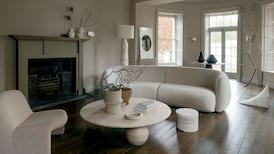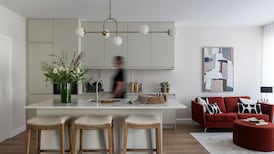Most homes have at least one awkward room that’s tricky to furnish or hard to use, whether it’s too narrow, too dark or just an odd shape.
These spaces often get overlooked or become glorified storage areas, but with a bit of smart thinking and a fresh perspective, they can offer the extra space we’re all looking for.
The key is to embrace the quirks and treat them as design opportunities, not limitations. Here are a few ideas to help turn those tricky spaces into some of the most successful parts of your home.
Large or very long rooms
Generously sized rooms come with their own set of challenges. They can feel cold and impersonal and can be difficult to use comfortably. The key to getting them right is to break the space into more manageable, purposeful zones.
READ MORE
Start by thinking about how the room needs to function. For example, one end might work well as a place to sit and chat with guests, while the other could be a more relaxed zone for reading or watching TV. Defining these areas with furniture, rugs, or changes in colour will help give each zone a clear identity and make the room feel more inviting.
Lighting plays a significant role here, too. If you’re updating the electrics, consider putting each zone on a separate lighting circuit. That way, you can light only the part of the room you’re using, instantly making the space feel more intimate.
Garage conversions

Whether you’re converting a garage or building a room over one, these spaces can unlock valuable extra square footage. But because they’re often narrow, they can be awkward to plan. The key is to design with the proportions in mind rather than fighting them.
Start by clarifying how the room will be used. If it’s a utility or boot room, lean into function. Maximise storage and ensure good task lighting. If it is a playroom, office or den, keep it bright and inviting. Built-in joinery can create customised storage or a bespoke workstation while keeping as much floor space free as possible. Adding a bay window is another great way to gain extra space and let in more natural light.
In some cases, bedrooms over garages run from the front to the back of the house. While dual-aspect rooms are a lovely feature, these particular rooms tend to be long and narrow.
One of the best ways to handle this is by dividing the space into zones. For example, you might use one end for sleeping and the other for a study or play area. Use paint and furniture placement to define each zone.
Attic rooms
Attic conversions are another area that can be challenging. Sloped ceilings, awkward corners and restricted head height can make these spaces tricky to furnish.
Start by identifying where you have full standing height. These are the best spots for anything that requires easy movement, like a bed, desk or dressing area. The lower areas under the eaves are ideal for storage.
Built-in solutions such as drawers, wardrobes or bench seating can make these hard-to-reach spaces work much harder without cluttering the room.
If you plan to include an en suite, headroom becomes even more critical. Toilets and baths can often sit comfortably in the lower parts of the roof, but basins and showers will need full-height clearance. Wall-hung fixtures are a smart choice; not only do they save space, but they can also be built out slightly to allow for recessed shelving above, making the most of every millimetre.
Internal rooms

Internal rooms with little or no natural light are common in homes that have been extended. Think of the old diningroom between the original sittingroom and a new rear extension. These spaces can often feel dark and disconnected.
Instead of fighting the lack of light, lean into it. A windowless room can make the perfect snug, den or reading nook. Somewhere to watch TV or unwind in the evenings. This is your chance to embrace deeper colours, richer textures and softer lighting to create a cosy, cocoon-like space.
Even though these rooms don’t have windows, you can still bring in natural light through your extension. The most effective way is to position a roof light in the new build as close as possible to the original rear wall of the house.
This helps direct daylight back into the central, darker areas, making a real difference to how the space feels during the day. Another option is to borrow light from neighbouring rooms. Glazed doors or screens can allow daylight to filter through while still maintaining separation and privacy.
Box rooms
Box rooms are often the first to be dismissed as too small to be of any real use, but these compact spaces can become some of the hardest-working rooms in the house.
Raised beds with storage underneath, slimline wardrobes and wall-mounted desks are all great options. Built-in joinery is especially effective, as it can be tailored to fit every millimetre without wasting valuable floor space.
If the space is used by a child, consider how their needs will change over time. Modular storage that can adapt as they grow will serve you better than fixed solutions.
It’s also worth thinking about how a box room can evolve. What starts out as a nursery or young child’s bedroom can easily transition into a home office, a hobby room, or even a dressingroom. With a flexible layout and good storage, these smaller spaces can adapt to whatever stage of life your household is in – making them far more valuable than their size might suggest.















